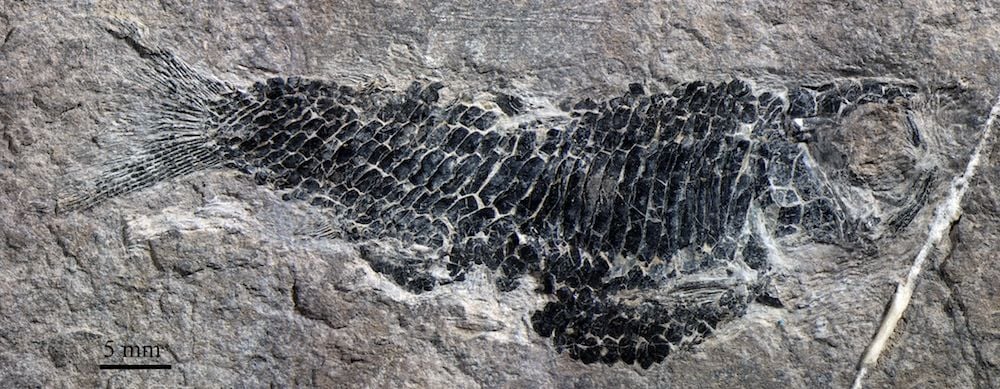Fossils Show How Flying Fish Started to Glide
In the quest to avoid being eaten, some fish took a leap into the open air
/https://tf-cmsv2-smithsonianmag-media.s3.amazonaws.com/filer/65/4d/654dddd7-2390-4db8-a42b-980eb6df7291/42-53680559.jpg)
Flying fish are certainly one of the most unbelievable sights on the open ocean, but they do exist. In fact, some sort of flying fish or another have been skipping over the waves for the past 200 million years. We know that these odd fishies don’t flap their fins, but rather use them to glide. The question the intrigues fish paleontologists is how exactly these fish developed such specialized appendages. New specimens found in southern China can help answer that.
The flying fish’s wings are actually enlarged front fins, and they help the fish escape predators. Some species even have larger pelvic fins, giving them four "wings." National Geographic writes:
The process of taking flight, or gliding, begins by gaining great velocity underwater, about 37 miles (60 kilometers) per hour. Angling upward, the four-winged flying fish breaks the surface and begins to taxi by rapidly beating its tail while it is still beneath the surface. It then takes to the air, sometimes reaching heights over 4 feet (1.2 meters) and gliding long distances, up to 655 feet (200 meters). Once it nears the surface again, it can flap its tail and taxi without fully returning to the water. Capable of continuing its flight in such a manner, flying fish have been recorded stretching out their flights with consecutive glides spanning distances up to 1,312 feet (400 meters).
That skipping produces a transfixing pattern on the water’s surface:
The oldest-known flying fish was discovered in 2009, but it is not related to modern flying fish. What researchers really wanted to find was an organism that was intermediate between a flying and a not-flying fish. The new fossil is exactly that. The specimens are 235 million to 242 million years old, related to thorocopterids (modern flying fish) and named Wushaichthys exquisitus. For LiveScience Charles Q. Choi writes:
This newfound fish was probably not a glider. It lacked the bottom-heavy tail fin seen in all known subsequent thoracopterids that helped them generate the power needed to launch them out of the water. Wushaichthys also lacked the winglike fins seen in later thoracopterids that would have helped them glide. Moreover, Wushaichthys was fully covered in scales, unlike more advanced thoracopterids that lost their body scales, which presumably helped improve their gliding efficiency and maneuverability.
However, the fish does have a broad roofed skull, which helps modern flying fish live in surface waters. Paleotologist Guang-Hui Xu, of China’s Institute of Vetrebrate Paleotology and Paleoanthropology in Beijjing, explained to LiveScience that the fish family developed its gliding ability in a four-step process. Skull changes came first, then tails to launch them from the water. Next, fins became winglike, and finally they lost their scales, giving them smoother, aerodynamic skin. The newfound fossils probably did try gliding as an escape strategy, they just weren’t very good at it yet.
The researchers published their work in Biology Letters.

Of course, like all interesting discoveries, this one presents more questions. The ancient Wushaichthys apparently gave birth to live young (it carries hooklets on its anal fin that are common among viviparous or live-bearing fish). Somewhere along the way to gaining flight, flying fish lost that ability and started laying eggs.

